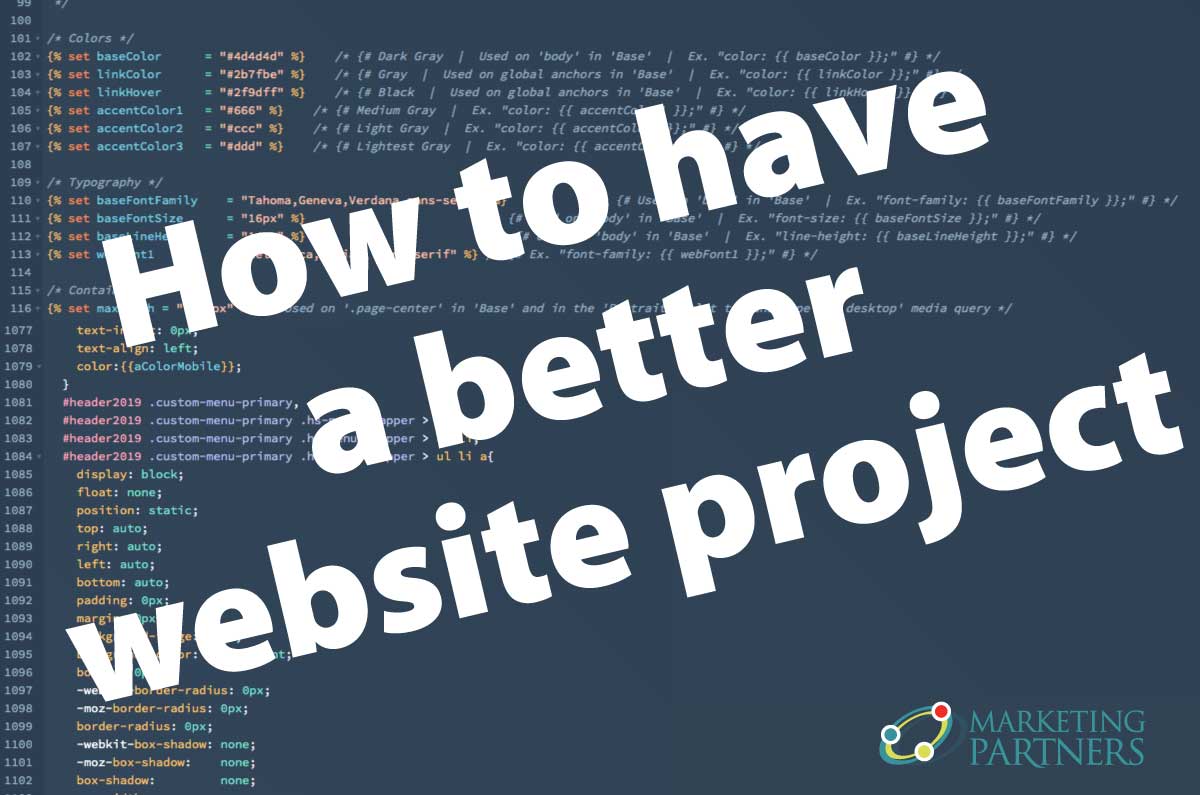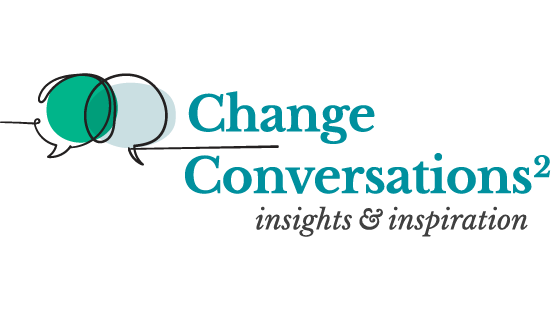
Considering a new website? Your goal is a stunning and hard-working new website in a process as smooth as possible. Miscommunication or conflict with your website developer can quickly torpedo your goal. Here are some questions to ask to make your job (and the job of your web developer) simpler and more effective as project partners. Every unanswered question can add risks and costs to your project.
Here are the questions:
Do you have a planning brief?
A planning brief sets the baseline expectations for everyone involved in your website project. It describes the situation, audiences, goals, objectives, technical requirements, and metrics for success. The planning brief also sets style and tone expectations and ‘must-have’ features, such as accessibility.
A planning brief gets everyone together to achieve a common goal. It doesn’t have to be exhaustive, but it does need to give everyone enough information to get your project started.
For a website project, be sure you include a draft site map as well. Your sitemap should show navigation, page organization, and standing elements to be included in the header and footer. A sitemap does not denote file structure or organization.
Download a draft planning brief: How to use a creative brief for effective collaboration.
Who is responsible for what?
Outline your website project responsibilities before you ask for estimates or assign tasks. When developing a website, the work falls into three or four general categories: Content, Design, Coding or building, and most importantly – planning the IT stuff. Outline the tasks you are planning to do yourself and the tasks you expect others to do.
Content: When it comes to content, you will need to determine if you are using existing content, re-purposed content (from your other marketing), or new content. Content is the words and the images used to convey your message on your website. Content can be assigned to multiple people for writing, editing, creating graphics, taking photos, and such. If you are building a new site and plan on using content from an existing website, do a site audit to catalog your existing content, and then compare to your new site map and mark sections that need to be changed or created. Migrating content from an existing website can be a time-consuming process, so be clear about whether you and your team will be handling this task or if you expect your website developer to do it. Caution, be sure you have rights to any images you use on your website. Avoid risking any copyright violations.
Design: Design and coding often go hand-in-hand, but are not the same job. Your website designer will need to know the capabilities (and limitations) of the website software, theme, and plug-ins to create a design that can be cost-effectively implemented. Using existing design assets like your logo, style guide, and color palette (or branding guide) will help the design process. Additionally, your brief should include examples of other websites that are liked and are effective for the same audiences.
You may hire a designer, or the web development firm will have a designer as part of their package. It is reasonable to ask for two design options and then two or three revisions. Additional design options or multiple rounds of revisions will escalate your costs.
Be sure you detail if you expect wireframes as part of the design process. Wireframes are simple descriptions of the function and content areas of a web page, and typically are done for desktop and mobile views.
Coding and Building: Do you have requirement for software? Are you planning to use WordPress, HubSpot, Drupal, or some other software platform? Does your new website need to interact with any other software or functions, like a store, order software, CRM (customer relationship manager), or marketing platform?
Knowing your requirements up front will get you a better quote and help you find someone with experience in building the connections to the website you need. If you’re open to recommendations on the software platform, then be sure to identify the requirements for functionality - such as, open source, subscription or maintained updates, or integrated email marketing.
The IT stuff: An important part of implementing a new website is NOT messing up all the other stuff. Your IT advisor and your web developer will need to coordinate on website hosting, software, and DNS (domain name system) settings. If you have your own IT person, they will probably want to be the ones to make the DNS entries for your new website. After all, your DNS controls your email and possibly other critical business functions. If you don’t have an IT person or staff, be sure you include this expectation in your scope of work. (P.S. Make sure you back up all of your DNS settings just in case something breaks.)
Part of the IT process is choosing a web host. Usually, your developer will have a preference or suggestion. There are many options out there, and depending on your platform and needs, the costs can be a few dollars a month to hundreds of dollars a month. A fully integrated system with your ERP (Enterprise Resource Planning) software can — and will — be more expensive.
Do you have a timeline?
Start with an initial planning timeline for your website development. Having the milestone dates and major activities will let everyone know not only what is expected, but when.
Be reasonable. A simple website will take much longer than most think. Typically, a basic website is twelve to sixteen weeks for development. There is a lot to accomplish between design, content development, and coding. Set planning meetings and approval dates in advance. Avoid project lag due to calendar issues.
Who will do the SEO (Search Engine Optimization) to start?
SEO is typically an ongoing process to refine and improve your website pages and content for search. Everyone wants to show up at the top of the list in search results, and it starts with your content.
When developing and editing your website pages, include some basic SEO information such as key terms or focus words (formerly keywords), page title, meta description, and desired page URL. Starting with your key terms or focus words will help you edit for your audience. Be sure you enter your meta descriptions for each page when building your site. There are several plugins that help with SEO on most popular platforms.
What to do about your old website?
Before you just trash the old files, make sure you have all the data saved, and all your settings for your new website entered. This includes page redirects.
Think of all the traffic your old site has been earning. You don’t want to break links or loose domain authority (which affects search results) by creating a bunch of “page not found” errors. If your old website has an “About Us” page and your new website has “About our Team”, then you need to redirect the old URL to the new page.
There are lots of tools that help do this, but they start with knowing the pages on your old site and how they relate to the pages on your new site. Note: This work should be planned in advance. Even a brief period of 'page not found" errors can significantly affect your search rankings.
Did you hook up Google Analytics?
So, it seems like a no brainer, but be sure you scheduled hooking your new site up to your Google Analytics account. Don’t start a new Google Analytics account unless you really need it, or you are changing your domain.
You’ll want to see if your new site is gaining traffic compared to your old site. Check your analytics to see if you have any page issues as well. See Opportunities for Your Website Using Analytics.
Who will connect to Google Webmaster Tools?
You’ll want to make sure that when your site goes live, you connect your new site with Google Webmaster Tools.
Google Webmaster Tools is a really valuable instrument for SEO. It gives you at-a-glance data about all important SEO aspects of a site, such as keywords, links, crawl errors, etc. Be sure to submit all versions of your domain name and your site map (xml) link.
One of the advantages of webmaster tools is the crawl error report. Google will email you when it finds errors on your website.
Who will get your site listed with search engines?
When you site is published, you’ll want to be sure your new site is listed with search engines. Eventually, search engines will find you. But, you can help them out and submit pages or site maps for indexing. Ask your developer if they are doing that or if you are responsible.
Does your website developer offer a warranty or maintenance agreement?
It’s a new website. Things are bound to come up. Think about all of your typical processes that you could use your website to accomplish. Do you have an annual event or sale? You may have a few times a year that you need to add something or change something. Getting a maintenance agreement and warranty for at least a few months if not the first year will help you use your website.
Do you need an owner’s manual?
You should request documentation about your website and the basic processes needed to maintain it. An owner’s manual is not the end-all users guide, but contains the basic information about your website, how it functions, and how to access the different components.
An owner’s manual should contain the accounts, user names, and how to get the passwords for the pieces that control your website. Typically, there is the name service provider, the hosting account, the hosting C-Panel, the website CMS, and possibly the theme license or plugins. The manual should list the theme, plugins, and any custom modifications to the code. Common image sizes and how to add images is helpful as well.
Additionally, an you may want to request instructions for common tasks (like adding a blog post or landing page).
What other integrations are needed?
Beyond search engines, you may have other integration needs. Do you use Google Ads or LinkedIn advertising? How about Facebook? Adding tracking code and integrating social accounts may be desired. Discuss this with your developer when you start your project.
P.S. All business pages should consider connecting LinkedIn pixel tracking.
What happens when the project is done?
Will your developer be available if you need help after the project ends? We’ve had clients come back months and even years later when something broke or they wanted to add a new feature. (And yes, it is possible to get years out of your new website with proper care and maintenance.) Some themes will also allow easier updates to graphics and appearance. In the rare case, a minor setting change can update the entire website appearance.
An example: The site below was updated with just one setting in the theme options. It changed from a narrow box site to a full width site. The one change in the site settings gave the website an updated appearance.
Taking the time in advance to be sure you and your website developer have a common understanding of the answers to these questions is a major step toward ensuring that stunning and effective new website you're after.
